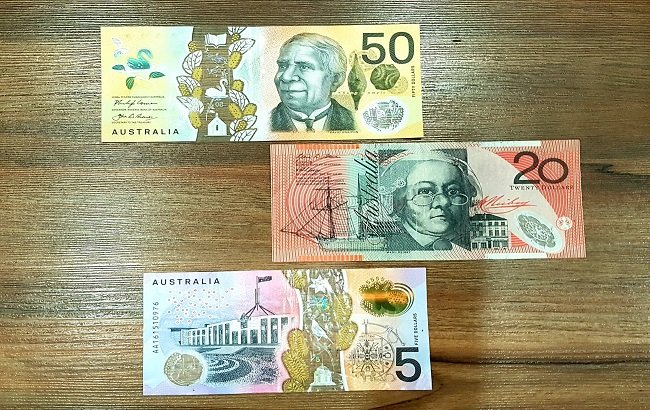The Dólar australiano a peso chileno exchange rate is a topic of great interest for those who engage in financial markets, international trade, or travel between Australia and Chile. Currency values are constantly fluctuating, and understanding these fluctuations is key to making informed decisions. In this article, we’ll break down five crucial insights that will help you navigate the complexities of the Australian Dollar (AUD) to Chilean Peso (CLP) conversion.
1. Understanding the Dólar australiano a peso chileno Exchange Rate
The Dólar australiano a peso chileno exchange rate is not fixed; it fluctuates based on multiple factors. These include the global supply and demand for the Australian Dollar and the Chilean Peso, inflation rates, interest rates, and commodity prices, among other things. Understanding these factors is crucial if you’re involved in international business, travel, or financial markets.
Why Does the Exchange Rate Change?
The exchange rate between the Australian Dollar and the Chilean Peso is highly sensitive to economic conditions in both countries and globally. When investors believe that the Australian economy is strengthening, demand for AUD increases, leading to an appreciation of the Australian Dollar against the Chilean Peso. Conversely, when the Chilean economy improves, the Peso might strengthen against the AUD.
Here are some of the key factors that directly impact the Dólar australiano a peso chileno exchange rate:
- Global Commodity Prices: Australia is a major exporter of commodities like coal, iron ore, and natural gas. Changes in commodity prices can significantly affect the Australian Dollar. Similarly, fluctuations in copper prices, a significant export for Chile, can impact the Chilean Peso.
- Interest Rates: If the Reserve Bank of Australia raises interest rates, it could make the Australian Dollar more attractive to investors, causing it to appreciate against the Chilean Peso.
- Inflation: High inflation in Chile can devalue the Chilean Peso, whereas moderate inflation in Australia might help stabilize the AUD. Conversely, low inflation in Chile can help support the Peso.
The Dólar australiano a peso chileno exchange rate typically changes throughout the day as these variables fluctuate.
2. The Impact of Global Economic Conditions on the Dólar australiano a peso chileno
Global economic conditions play a huge role in determining the value of any currency, including the Dólar australiano a peso chileno exchange rate. Events like a global recession, trade wars, or geopolitical crises often lead to changes in how currencies are valued.
How Global Events Affect the Dólar australiano a peso chileno
Several global events can influence the AUD/CLP exchange rate:
- US Dollar Movement: Since the US Dollar is the world’s primary reserve currency, movements in the USD often affect other currencies. When the USD strengthens, currencies like the Australian Dollar may weaken in comparison, and the Dólar australiano a peso chileno may also be impacted.
- Global Recessions: A global economic slowdown can decrease demand for commodities, impacting Australia’s trade balance and weakening the AUD. Similarly, Chile’s reliance on copper exports means that global demand for copper influences the Peso.
- Natural Disasters: In countries like Australia and Chile, natural disasters such as droughts, floods, or earthquakes can damage the economy and lead to significant currency fluctuations. For example, a natural disaster in Chile could disrupt copper production, affecting the value of the Chilean Peso.
In summary, economic slowdowns or disruptions in global markets can have a profound impact on the Dólar australiano a peso chileno rate, making it essential for traders, investors, and travelers to monitor global conditions.
3. Economic Policies in Australia and Chile: A Major Influence
Both Australia and Chile have economic policies that directly impact the value of their currencies. The central banks of both countries—Australia’s Reserve Bank and Chile’s Central Bank—implement policies to stabilize inflation and foster economic growth. Their decisions on interest rates, government spending, and economic stimulus programs can cause fluctuations in the Dólar australiano a peso chileno exchange rate.
Key Economic Policies to Watch:
- Australia’s Monetary Policy: The Reserve Bank of Australia (RBA) influences the value of the AUD by adjusting interest rates and monetary policies. When the RBA raises interest rates, the AUD may appreciate, attracting international investors looking for higher returns. Lower interest rates, on the other hand, can weaken the AUD.
- Chile’s Central Bank: Similarly, the Chilean Central Bank can adjust interest rates to influence the value of the Peso. High interest rates in Chile can make the Peso more attractive to investors, strengthening the exchange rate.
- Government Stimulus Programs: Government spending and stimulus programs can also impact exchange rates. If Australia or Chile announces significant infrastructure projects or economic aid, it can boost investor confidence in the country’s currency.
- Trade Agreements: Trade agreements between Australia and Chile, as well as with other countries, affect the flow of goods and capital. Any changes in trade policies—such as tariffs, taxes, or international agreements—can impact both currencies, including the Dólar australiano a peso chileno.
Being aware of the economic policies in both countries can help predict shifts in the Dólar australiano a peso chileno exchange rate. Monitoring central bank meetings and national economic reports is crucial for staying informed.
4. How to Benefit from the Dólar australiano a peso chileno Rate
If you need to exchange AUD to CLP, or vice versa, it’s important to know how to benefit from favorable exchange rates. Whether you’re an investor, a traveler, or a business owner, there are several strategies you can use to maximize your financial gain when dealing with the Dólar australiano a peso chileno exchange rate.
Practical Tips to Get the Best Exchange Rates:
- Track Exchange Rates Regularly: Use online tools, currency apps, and financial websites to track the latest exchange rate movements for the Dólar australiano a peso chileno. This will help you spot favorable trends and plan your currency exchanges accordingly.
- Time Your Currency Exchange: Timing is key when it comes to currency exchanges. By tracking the market and watching for fluctuations, you can exchange your AUD or CLP at a more favorable rate.
- Currency Conversion Apps: There are numerous apps and websites that can help you convert AUD to CLP and vice versa in real time. Some apps also allow you to lock in a favorable rate for a certain period, which can help mitigate risks from sudden market changes.
- Currency Hedging for Investors: If you’re involved in international business or investing, currency hedging can be a great way to protect yourself from unfavorable changes in the Dólar australiano a peso chileno exchange rate. This strategy allows you to lock in a specific exchange rate for future transactions.
- Shop Around for the Best Rates: Different currency exchange services—whether banks, currency exchange booths, or online platforms—can offer varying rates. Always shop around to find the best deal before making any conversions.
Additional Resources for Currency Exchange
If you are looking for an easy way to potentially benefit from currency exchange and take part in additional promotions, consider checking out Win Spirit Casino Promo Code, where you might gain even more funds to help with currency exchanges!
5. Political Events and Their Impact on the Dólar australiano a peso chileno
Politics has a major role in currency markets, and the Dólar australiano a peso chileno is no exception. Political events in both Australia and Chile can lead to increased market volatility, which can affect the exchange rate. Political instability, elections, and policy changes can create uncertainty for investors and influence the value of a country’s currency.
How Political Events Affect Currency Markets:
- Elections and Leadership Changes: Both Australian and Chilean elections have the potential to impact the national economy. A change in government often leads to shifts in economic policies, which can affect the strength of the local currency.
- Trade Relations and Tariffs: Political decisions around trade agreements, tariffs, and sanctions can directly affect the Dólar australiano a peso chileno rate. For example, if Australia or Chile enters into a trade dispute with a major trading partner, it can lead to instability in the currency market.
- Social Unrest: Political or social unrest in either country can lead to a decrease in investor confidence, which can result in a devaluation of the local currency.
By paying attention to the political climate in both countries, you can anticipate potential shifts in the Dólar australiano a peso chileno exchange rate.
Conclusion
Understanding the Dólar australiano a peso chileno exchange rate is essential for anyone involved in financial transactions between Australia and Chile. The rate is influenced by various factors, including global economic conditions, local economic policies, political events, and commodity prices. By staying informed and tracking key trends, you can make better decisions when exchanging currency or investing in international markets.
Whether you’re a traveler, investor, or business owner, these five insights will help you better navigate the fluctuations in the Dólar australiano a peso chileno exchange rate. Remember to stay updated on the latest economic and political developments in both countries to stay ahead of the curve.
FAQ
Q1: Why does the Dólar australiano a peso chileno exchange rate fluctuate?
The exchange rate fluctuates due to factors such as interest rates, inflation, commodity prices, and political events in both Australia and Chile.
Q2: Can I predict the Dólar australiano a peso chileno exchange rate?
While it’s difficult to predict exchange rates with certainty, staying updated on global economic conditions, national policies, and political events can help you make informed predictions.
Q3: How can I get the best exchange rate for Dólar australiano a peso chileno?
You can track exchange rates regularly using currency apps and websites, compare rates from different providers, and time your exchanges to maximize your financial gain.
Q4: How do political events influence the Dólar australiano a peso chileno?
Political events such as elections, leadership changes, and trade policies can lead to volatility in the market, which can impact the exchange rate.
Q5: Where can I find more information about currency exchange rates?
You can check websites and financial news outlets for real-time updates on the Dólar australiano a peso chileno exchange rate. Currency apps are also useful tools for monitoring trends.
Want to potentially make extra gains in exchange rates? Explore the Win Spirit Casino Promo Code for great deals and opportunities!



